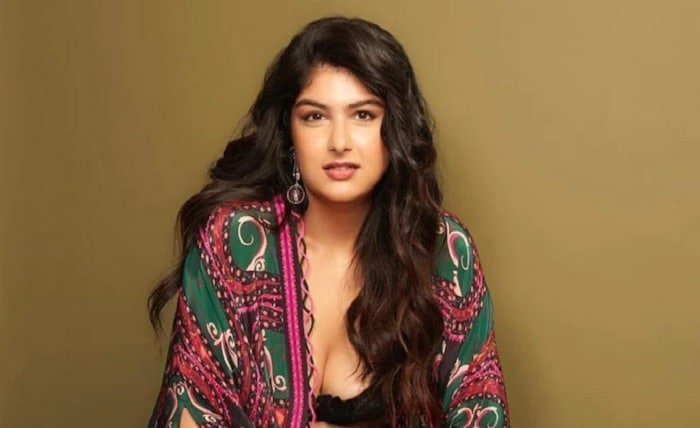The phrase chunni mein instantly evokes the charm of South Asian attire, especially among women who wear it with grace and dignity. Whether draped over the head during a traditional ceremony or worn elegantly around the neck with a modern outfit, the chunni mein holds cultural and emotional significance. It is more than just a piece of fabric; it represents values, modesty, identity, and a beautiful expression of femininity across generations. In weddings, festivals, and daily life, the role of chunni mein has continued to evolve while maintaining its deep roots in tradition.
Chunni Mein in Weddings: Symbol of Modesty and Purity
During traditional weddings, the chunni mein becomes an emblem of sanctity and blessing. Brides often receive a chunni mein as part of a ceremony called the chunni chadai, symbolizing their acceptance into the groom’s family. This moment, marked by emotional rituals and vibrant celebrations, places the chunni mein at the heart of the matrimonial experience. Embroidered with gold or silver thread, and sometimes adorned with sequins or mirrors, the chunni mein draped over the bride’s head elevates her grace while also acting as a cultural veil of respect.
Chunni Mein in Everyday Fashion: Tradition Meets Modernity
In contemporary fashion, chunni mein has found a new life. While it was once reserved mainly for traditional wear like salwar kameez and lehengas, today’s women have reimagined the chunni mein in daily fashion. Worn casually over kurtis or used as a statement scarf, chunni mein blends comfort with style. The choice of fabrics—from chiffon to cotton to silk—allows for seasonal adaptability, ensuring chunni mein remains relevant in all climates. Through street fashion, influencers, and runways, chunni mein has proven its ability to evolve while keeping its roots intact.
Chunni Mein and Cultural Representation in Cinema and Music
Bollywood and regional cinema have played a pivotal role in glorifying the symbolism of chunni mein. Think of classic scenes where a heroine’s chunni mein is caught in the breeze or held by her lover—instantly creating a romantic or dramatic visual. Songs like “Laung Da Lashkara” or “Dupatta Mera” popularize the poetic presence of chunni mein, making it a metaphor for romance, rebellion, or even heartbreak. In music videos and film costumes, the vibrant flutter of chunni mein adds color, movement, and emotional depth to storytelling.
Chunni Mein Across Regions: Diversity in Design and Usage
While the essence of chunni mein remains the same, its regional adaptations are truly fascinating. In Punjab, it’s known for its bright colors and phulkari embroidery. In Gujarat and Rajasthan, chunni mein often displays mirror work and bandhani designs. South Indian versions may incorporate gold threading and temple borders, while in Kashmir, chunni mein often comes with delicate Pashmina weaves. This regional diversity in chunni mein styles represents the multicultural richness of the Indian subcontinent, each reflecting the aesthetic sense and tradition of its people.
Chunni Mein as a Gift: Emotional Bonds and Blessings
Gifting a chunni mein has long been a part of family traditions. Whether passed down as a cherished heirloom or bought fresh for festivals and weddings, chunni mein often carries emotional value. It might be a grandmother’s chunni mein preserved as a keepsake, or a mother buying her daughter a richly embroidered one for Eid or Diwali. The chunni mein often signifies blessings, protection, and love, making it more than just fabric—it’s a bridge between generations and a symbol of timeless emotional connections.
Chunni Mein in Religious and Spiritual Practices
The role of chunni mein extends deeply into spiritual traditions as well. In Sikhism, women wear chunni mein while visiting the Gurdwara as a mark of respect. Similarly, in Hinduism, women don chunni mein during temple visits or during pujas. Covering the head with chunni mein is seen as a form of devotion and humility. In Sufi shrines, colorful chunni mein are often offered as tokens of prayer. Thus, chunni mein becomes a spiritual medium—binding faith, identity, and devotion in one seamless piece.
Chunni Mein and Sustainability: Reviving Handloom and Crafts
As the fashion industry pivots toward sustainability, chunni mein crafted from handloom fabrics and organic dyes has gained new relevance. Artisans across India and Pakistan are reviving lost techniques like block printing, kalamkari, and chikankari through chunni mein. These handmade pieces not only reflect exquisite craftsmanship but also support rural economies. Choosing a handcrafted chunni mein becomes a statement of slow fashion—celebrating culture, ethical production, and timeless style. In this way, chunni mein also contributes to preserving the planet while honoring tradition.
Conclusion
From the rural heartlands of India to global runways, chunni mein continues to hold its own as an evergreen garment rich in tradition and versatility. It serves as a cultural identifier, a fashion accessory, a spiritual tool, and a piece of emotional heritage. In every fold and color of chunni mein, stories are woven—stories of womanhood, of culture, of celebration, and of change. Whether worn casually or ceremonially, chunni mein remains an irreplaceable part of South Asian identity, symbolizing elegance, dignity, and unity across time and space.
FAQs
1. What is the significance of chunni mein in Indian weddings?
In Indian weddings, chunni mein symbolizes purity, respect, and the bride’s acceptance into a new family, especially during the chunni chadai ceremony.
2. Can chunni mein be worn in modern fashion styles?
Absolutely! Chunni mein has become a fashionable accessory in modern wardrobes, often styled as scarves or shawls over contemporary outfits.
3. Are there different types of chunni mein based on region?
Yes, chunni mein varies by region—like phulkari from Punjab, bandhani from Gujarat, or pashmina from Kashmir—each with unique patterns and techniques.
4. Is chunni mein used in religious ceremonies?
Yes, chunni mein plays a respectful role in religious practices across faiths like Sikhism, Hinduism, and Sufism, especially when entering sacred spaces.
5. How can I preserve a traditional chunni mein?
To preserve chunni mein, store it in a dry, dark place, use tissue wrapping, and avoid direct sunlight to prevent color fading or fabric damage.






